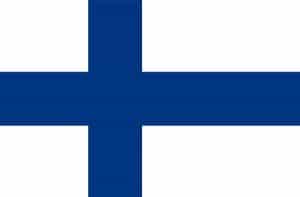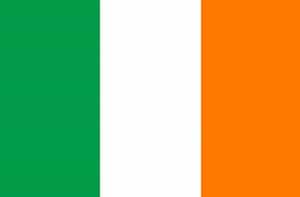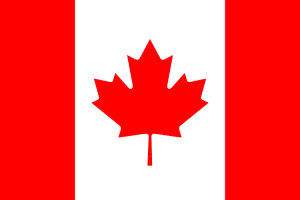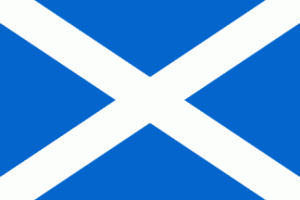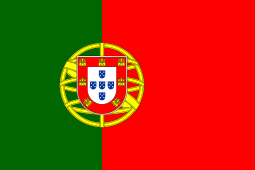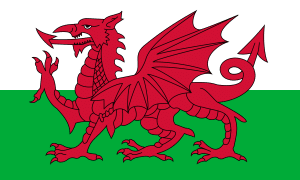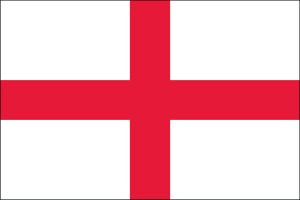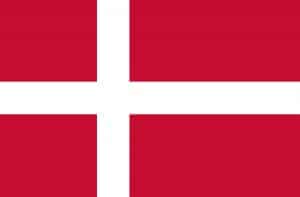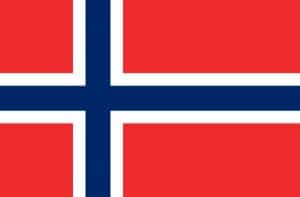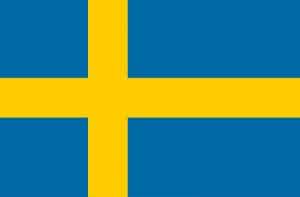Northwest Explorer
Overview
The Northwest Explorer is an American fishing vessel based out of Seattle, Washington. the Northwest Explorer will sample Pacific salmon and their ecosystems across a grid of stations spanning the North Pacific Ocean (NPO) from 50°E to 135°W. This will be the fifth vessel added to the fleet for the 2022 Pan-Pacific Winter High Seas Expedition. This survey will help complete stations in the United States Exclusive Economic Zone in the Gulf of Alaska and will be using a surface mid-water trawl.
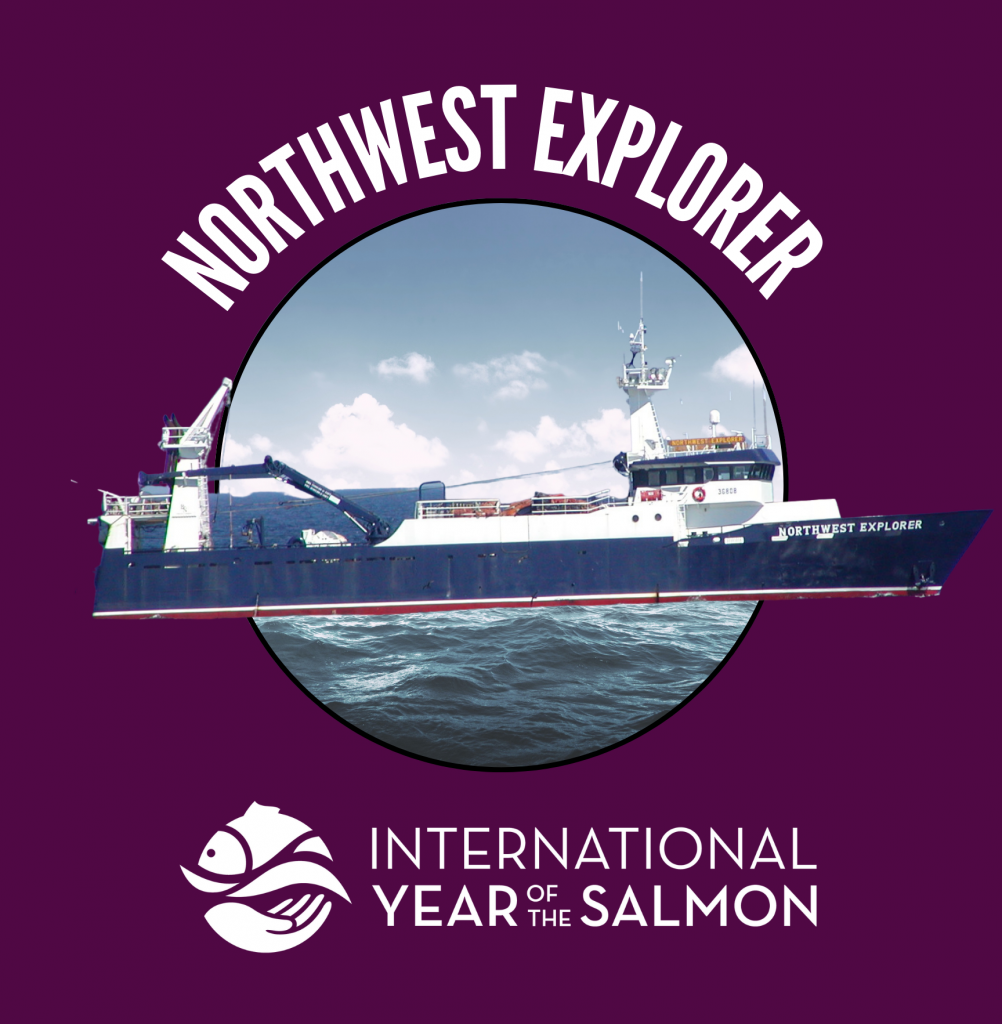
UPDATES FROM THE SHIP
Click on photo gallery to enlarge images!
The IYS wishes to acknowledge and express gratitude to the owners and crew of the F/V Northwest Explorer for their exemplary service to the 2022 Pan-Pacific Winter High Seas Expedition. The Northwest Explorer epitomizes the Alaskan seafood industry’s commitment to supporting research endeavors to ensure that Alaska’s fisheries are managed sustainably, and with access to the best information possible. To this end, the Northwest Explorer has served as a research platform for decades, including participation in the following activities: NOAA Resource Assessment and Conservation Engineering (RACE) Division surveys; NOAA Southeast Alaska Coastal Monitoring (SECM) Program surveys; NOAA Gulf of Alaska Integrated Ecosystem Research Program (GOAIERP) surveys; NOAA Northern Bering Sea Surface Trawl and Ecosystem surveys; and, Southeast Alaska marine mammal research surveys, to name a few. For their participation in and leadership of the sampling of Pacific salmon and their ecosystems across a grid of stations spanning the North Pacific Ocean (NPO) from 50°E to 135°W, IYS thanks Captain Adam White, First Mate Chris Willis, Chief Engineer Andersson Yikane, Deck Boss Manny Teixera, Deckhand Matt Dwyer, and Assistant Engineer Tanner Gaiser. Best wishes to the F/V Northwest Explorer and its crew for safe and successful 2022 operations!
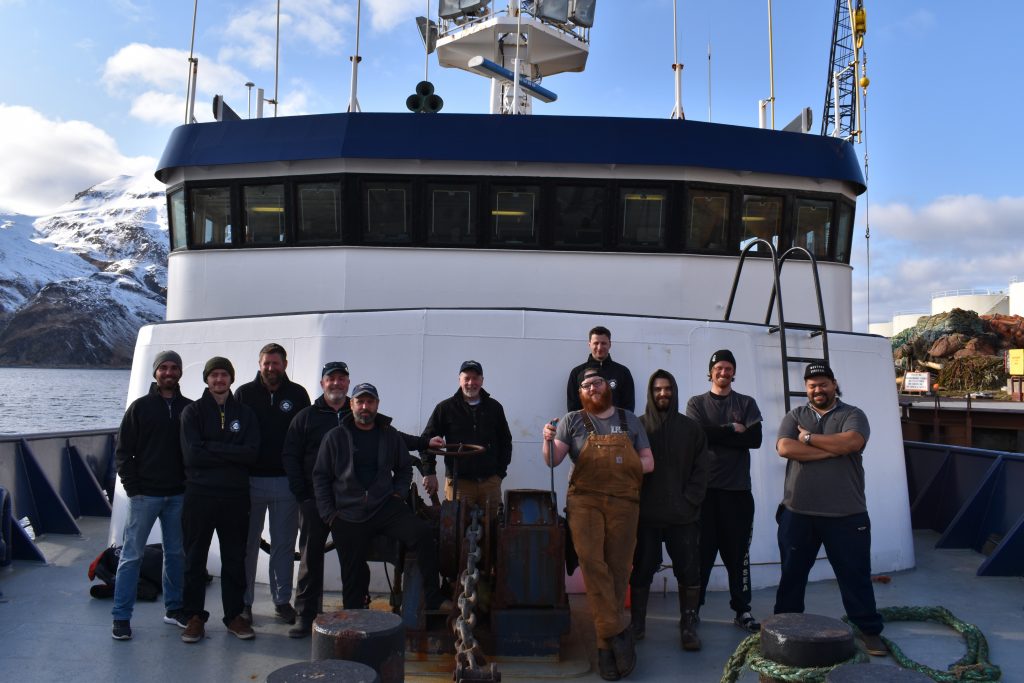
The F/V Northwest Explorer moved north from the North Pacific to the Bering Sea near Unimak Pass in the early part of the week, avoiding high winds throughout the areas south of the Aleutian Islands. The vessel was in calm water but in the eye of the storm. Despite an attempt to operate in the Bering Sea, a decision was made late in the day to conclude the survey. The vessel transited back west and south towards Dutch Harbor through the evening and reached Dutch Harbor early in the day on January 20. The 2022 Winter High Seas Expedition will draw to a close here.
Running for Dutch Harbor seemed the only option with a large system moving in. The storm on the horizon had been forecast for more than a week and its intensity and trajectory never shifted in that time. High winds reached Atka Island (173°W) early Sunday morning and extended east of Unalaska Island (163°W) by early afternoon, transiting the entire east-west survey grid for the F/V Northwest Explorer in a matter of hours. The vessel is now in the eye of the storm immediately south of Unalaska. Sampling further south and west are not an option. Plans are in discussion for targeting stations in the areas immediate to the islands near Unimak Pass, east towards the Alaska Peninsula.
The Northwest Explorer and her crew(s) persisted in the face of deteriorating weather conditions to successfully complete two stations for the day today. The day’s haul resulted in the harvest and sampling of 49 chum and 5 sockeye salmon, along with 3,441 Minimal Armhook Squid, 2 Middendorff Armhook Squid, and 1 Daggertooth.
The evening station was remarkable given the number of squid harvested (all of the day’s catch), and the size and condition of salmon harvested. IYS scientists have been using a novel tool to quantify salmon condition: a Distell lipid meter. The meter is a handheld device with a sensor that, when pressed against a salmon, measures microwave reflectance and uses the relationship between water and lipid content to determine the latter reading for the targeted salmon muscle. With some calibration the device can provide an in-situ measure of energy storage in salmon muscle, thereby providing insight into a salmon’s body condition. Chum salmon caught in Sunday evening’s trawl had some of the highest lipid meter values of any chum salmon caught during the expedition. This high value reflects their robust condition following the winter season and is potentially a sign that they have begun storing energy in anticipation of maturing in the coming year.
Similarly, the evening’s harvested chum salmon averaged approximately 4.4 pounds in weight, whereas the average for all previously harvested chum salmon during the expedition is approximately 1.87 pounds. Subsequent analysis of associated genetic samples will provide insights into the origin of these fish, and their eventual destination.
The Northwest Explorer and her crew will be running most of Monday in an effort to seek refuge from a large storm moving into the sampling area.
Another diagonal line to the southeast in the night brought the F/V Northwest Explorer to the two northern stations on the transect at 169W. Rough seas made for difficult sampling conditions, but two additional stations were brought into the grid, completing the northern part of the planned survey grid.
Improved weather conditions allowed for the successful completion of 2 stations for the F/V Northwest Explorer and its crew today. The day’s haul resulted in the harvest and sampling of 5 species of Pacific salmon across both stations: 41 sockeye, 21 chum, 2 pink, 2 Chinook, and 2 coho salmon. The crew is hopeful to get in two more stations on Sunday before a storm forces the vessel out of the Gulf of Alaska.
With the forecast ominous and a major storm on the horizon, the F/V Northwest Explorer headed diagonally northeast throughout the previous evening, arriving on station for the two northernmost stations along transect line at 171°W. This marks stations 19 and 20.
Challenging weather conditions again limited the F/V Northwest Explorer to one trawl set today. However, it was the largest set of the expedition thus far with a total of 95 salmon harvested: 78 chum, 9 sockeye, and 8 pink salmon.
Rough winds persisted leading to high seas building over multiple days. To address the westerly winds, the F/V Northwestern Explorer continued west, reaching a transect line due south of Atka Island. On this trajectory, only one sampling station per day was possible. Conditions improved slightly from the previous day, with consistent 15’ seas and an occasional 20-footer. This is the furthest south and west that this vessel will reach at 173°W. Tomorrow the vessel will head back north and east to avoid high seas. Weather conditions are forecast to deteriorate significantly on Sunday and the vessel and crew are looking to exit the region prior to the onset of the storm. A system is moving west to east, reaching the central Aleutian Island chain early Sunday and persisting through Tuesday forecast with winds exceeding 45 mph.
Challenging weather conditions couldn’t keep the F/V Northwest Explorer from fishing today! Despite the weather, harvest for the day totaled 55 chum, 26 sockeye, and 2 pink salmon. Due to the weather, sampling was limited to one station, with a midday set.
The weather degraded again with high winds throughout the southern Aleutian Islands. To mitigate the conditions on the water the F/V Northwest Explorer deviated from its north-south line and headed west into the winds. East west transect lines are further apart than the north-south station distances, meaning that on this line, only one station a day is possible. That station was completed at 171°W. Ocean swells were 20’ with the occasional 30-footer. This marked the largest haul to date with more than 70 salmon. The sever conditions and large haul made for a long station that took several hours to complete.
Solid catches continued for the F/V Northwest Explorer today Salmon harvests for the day totaled 61 chum, 22 sockeye, 2 pink and 1 coho salmon caught between 2 stations. The morning set resulted in the harvest of 3,300 threespine stickleback. NPAFC Commissioner and volunteer Tommy Sheridan participated in a conference call with Jennifer Hodge’s 3rd 4th and 5th grade students at the Kenny Lake Elementary School in Alaska. Kenny Lake students have been part of the Copper River Watershed Project’s “Salmon in the Classroom” curriculum for 3 years, where students incubate, hatch, and rear coho salmon in their classroom aquarium while learning about the biology and life history of salmon through this unique program. The students had excellent questions prepared for Mr. Sheridan, and Mrs. Hodges reports that her students learned much through the experience, and will continue to follow the expedition from afar (note the IYS website on the classroom smart board!).
The F/V Northwest Explorer transited west in the night and headed north again in morning, starting its fourth vertical transect line at 169°W. Conditions on the water were excellent and sampling was efficient
April 12 was a big day for the F/V Northwest Explorer! Salmon harvests were good with a total of 52 chum, 16 sockeye and 1 pink salmon caught between 2 stations. the evening station was among that most southerly of the expedition, and there was a marked increase in the number of smaller, younger salmon sampled. A midday deepwater trawl set resulted in 531 Northern Lampfish, 86 Bigeye Lanternfish, and 80 California Headlight fish. These epi- to mesopelagic fish are relatively small in length, with most specimens measuring less than 100mm SL. A notable deepwater harvest was a Middendorff Armhook Squid. Juveniles of this species tend to be found near the surface during the day, and are important to the diet of salmon, especially King Salmon.
Tuesday also marked the completion of the third transect at 167°W. Unfortunately, one of the stations on this line, station 13, lived up to its superstitious name. The deployment of the bongo net used the sample fish larvae, nekton, and zooplankton failed and there were other complications related to the oceanographic equipment. The vessel arrived on the final station on this line in late evening. The station was initiated at 7PM, the net haul started an hour later, and sampling operations continued past dark.
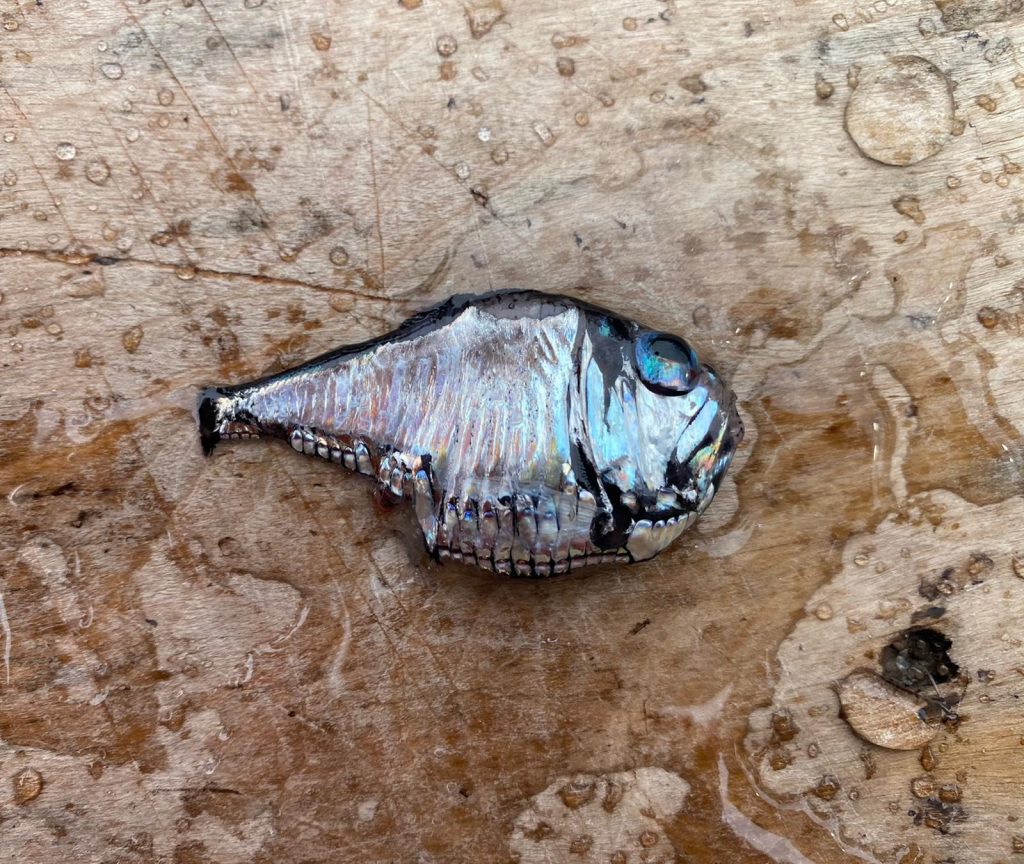
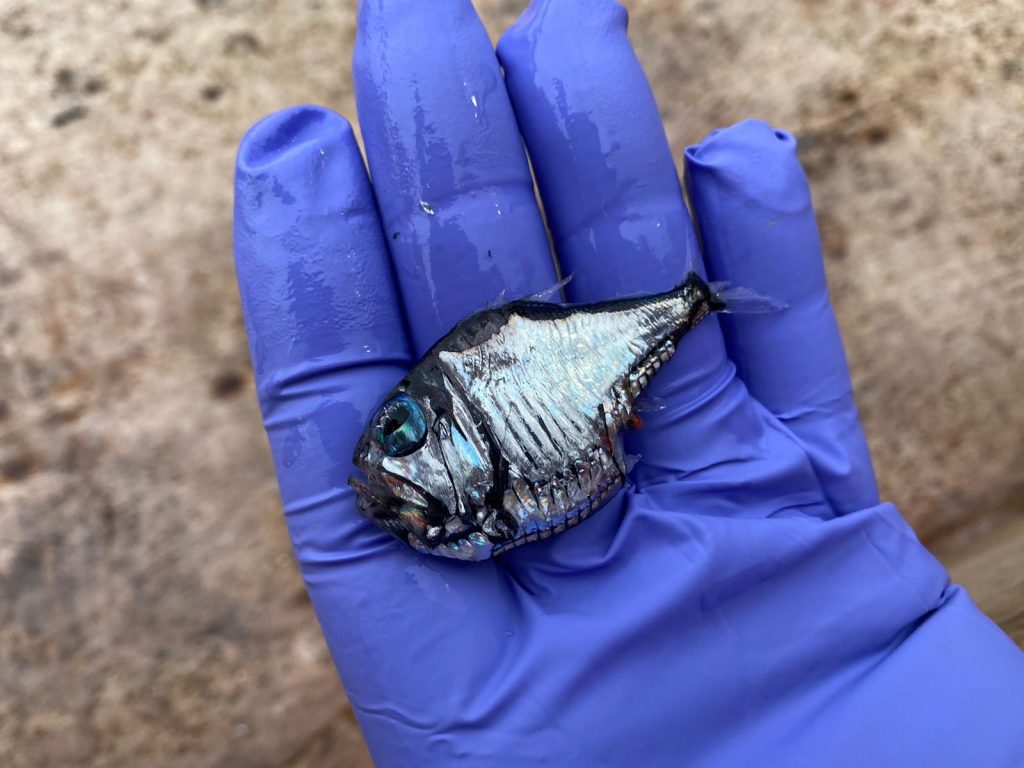
Scientists aboard the F/V Northwest Explorer have caught the first hatchet fish of its kind ever observed in Alaskan waters!!! This first-of-its-kind specimen is bound for a museum collection!
The F/V Northwest Explorer resumed operations early. The vessel was ultimately able to complete morning and evening tows, completing stations 11 and 12 and initiating the start of a third transect running south. Following a 2.5 day weather delay, the F/V Northwest Explorer crew(s) were back at it. The salmon haul for the day was 12 chum and 19 sockeye salmon. A new instrument was deployed at the fish processing station and the science team started to collect fatmeter values from sockeye and chum. These data will be useful in constructing lipid content models for these species. For the evening station, warmer surface water temperatures were observed, with an 8 degree C reading versus a previous high of ~5.5 degrees C. The science crew resumed their evening movie ritual – complete with root beer floats – a first for one of the scientist!
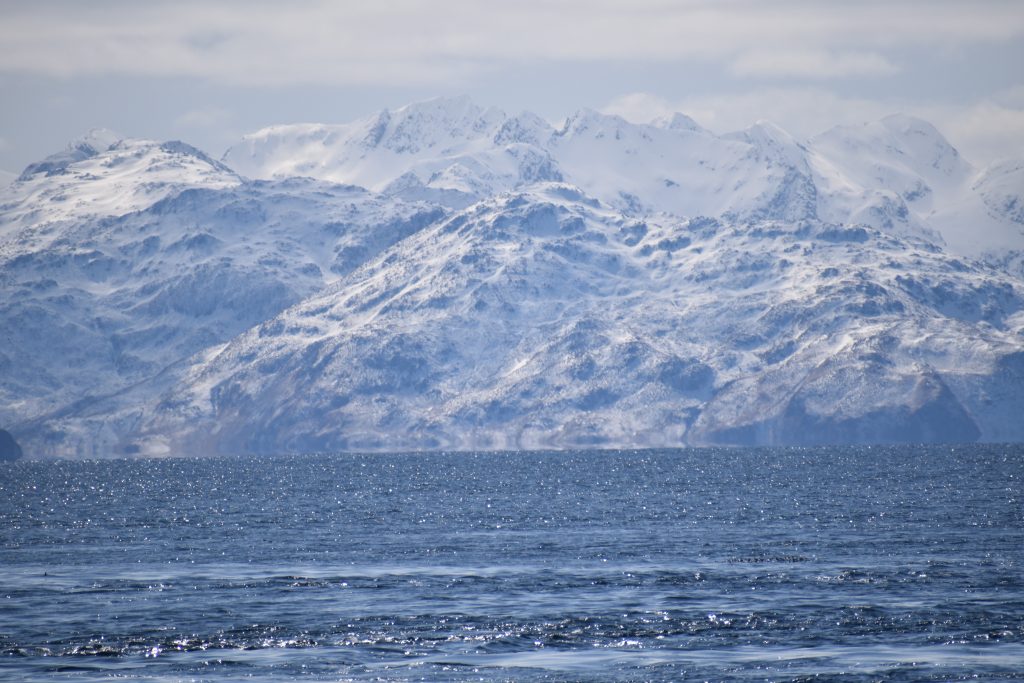
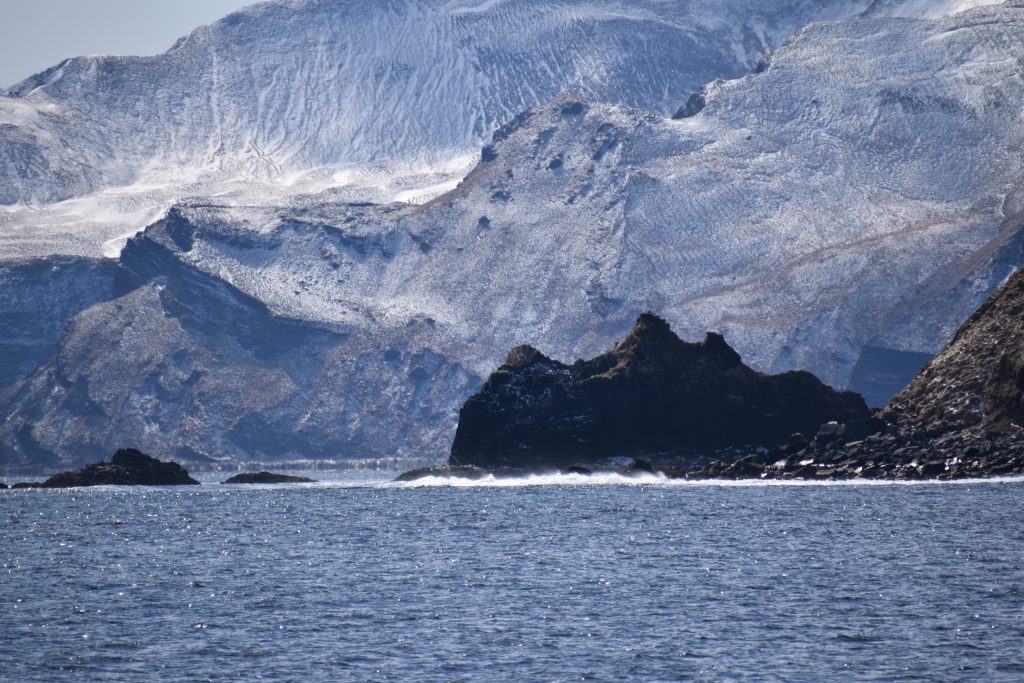
On the weekend, the spare pelagic trawl net was loaded on deck, replacement hydraulic parts were installed on the net reel, other supplies loaded, and the F/V Northwest Explorer headed back into the North Pacific. The vessel transited Saturday night, arriving on station at the top of the third transect early Sunday morning. High seas remained and the vessel was not able to deploy oceanographic equipment or nets in the rough waters. Instead, to manage the waves the vessel spent the day on an east-west orientation and trajectory, running back and forth into and with the waves, to avoid broadside rolls. The rough weather persisted throughout the weekend and sampling operations were placed on hold.
Overall today has been a very slow day. We were weathered out from sampling and have been jogging to the east and west in 20+ foot seas and 35+ knot winds. Fingers crossed that the weather comes down and we can get back to work tomorrow!
The Northwest Explorer arrived in Dutch Harbor Friday evening, transiting through Unalga Pass and crossing from the broader North Pacific Ocean to the Bering Sea. The vessel returned to port on the weekend to avoid high winds and weather and to secure a trawl net that had been sent north from Juneau at the start of the survey. This expedition was put together on short notice and until now the vessel was operating without a spare net. The net in use was conveniently in Dutch Harbor, Alaska already, used in previous NOAA surveys in the Northern Bering Sea. But with more than 15 years in use at sea for this net, and the experience of torn nets on other vessels in the High Seas expedition earlier in the 2022 season, a spare net seemed like good insurance
We awoke to a view of the Aleutian Islands in the far distance, emerging from the water as a white line of snow-capped peaks along what had been until now, a horizon devoid of land. Clam water. Light snow flurries in the morning gave way to bright sunshine. The weather to date has been a constant flux between sunshine and snow, with constant wind.
The morning haul was light, yielding a half-meter North Pacific daggertooth and a handful of three-spine sticklebacks. Daggertooth (Anotopterus spp.) are a genus of mesopelagic fish found in the oceans worldwide, but most prevalent in subarctic waters. These are ambush predators, able to dart quickly over short distances and predate on barracudina and immature salmon, their presence mostly detected through slash marks on juvenile salmon. Mid-day we initiated a second haul. This deep tow descended down to the deep-scattering layer, where we collected a haul of salps and several walleye pollock. The F/V Northwest Explorer earns its way on pollock, so these were familiar sight to the crew, though at several orders of magnitude less abundant than the typical haul. Our six fish at approximately 1.1 kg each equated to 6.4kg, compared to a maximum haul of 400 metric tons or 1 million pounds often landed on this vessel when engaged in fishing operations. This haul marked the 10th haul on the F/V Northwest Explorer.
This afternoon we set on offshore!
We are on the second transect for the survey, heading north. Our first haul has the salmon that we have consistently found in these waters south of the Aleutian Island chain, chum and sockeye. These waters are 4.2 °C, what appear to be at the lower limit of the thermal tolerance for salmon. North of this temperatures continue to drop and our hauls are devoid of salmon. The afternoon haul yields no salmon but black rockfish a pelagic species that we had no expected to find so far offshore. The weather is excellent and the seas calm. This is the afternoon for the drone and we record the operations throughout the afternoon hauls and gear deployment
Wednesday was a day of multiple tows. The usual morning and evening tows for salmon, salps, squids, and jellies. But mid-day we dove the trawl deep to 415 meters to target the deep scattering layer. In a short tow we brought on board a host of myctophids and other species from the twilight zone. These included lantern fish with photophoric headlights on their foreheads, fiery armhook squid with flood lights beneath its large eyes, eel-like white and slender barracudina and Pacific viperfish with daggerlike teeth and extended lower jaws. Fish you normally see on the Blue Planet scattered across the sampling table and organized into groups for identification and archival. These are very much the monsters you see on screen, but are much smaller than expected. Despite their outsized jaws and teeth these viper fish are small enough to fit several in the palm of your hand.
Manuel Teixeira, better known as Manny, hails originally from Portugal. Manny is the lead crew on deck and a true genius with nets, chains, cranes, and sets. He has been tirelessly working to keep us on schedule and operational. Today was his birthday and Larry our cook made a rich chocolate cake for all. In the few hours between dinner and cake, we set and managed to bring in a haul of 31 salmon, sockeye and chum. That seemed reason enough to celebrate.
Now we’re in a routine, CTD casts through the barn doors to a depth of 250m each morning and evening, followed by bongo nets and size fractioning of zooplankton while we await the return of the trawl. Cod ends have been relatively small but consistent. We managed 24 (8 chum and 17 sockeye) on the first set and 10 on the evening set (8 sockeye and three chum). 12 foot seas and constant swells. We have reached the southern extent of our survey grid and tomorrow we will start to work stations back to the north and the Aleutian Chain.
After a night and most of the day in transit we reach our first station, east of Unalaska Island. The weather changes by the minute heavy storm clouds, brilliant sunshine, heavy snowflakes, hail. And always waves. Snow each day. We are definitely still in winter. The first haul brought some unexpected returns. More than 100 three-spine sticklebacks and capelin as well.
After several days, or weeks for some, in Dutch Harbor, we are at the docks and ready to set sail. Safety briefings follow introductions and now we are ready to cast lines. The Northwest Explorer, the fifth vessel in the fleet committed to sampling the North Pacific for salmon and characterizing the oceanography of the Gulf of Alaska and Aleutian Chain in winter. Darkness falls and the snow races and swirls across the bow. The view from the wheel house is one of dark waves and light snow. We are at sea.
The Scientific Team
Meet the fascinating team of scientists on board American fishing vessel the Northwest Explorer
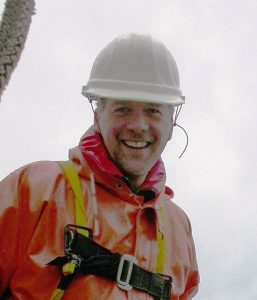 Jim Murphy is a research biologist with the Salmon Ocean Ecology and Bycatch Analysis group and the Ecosystem Monitoring and Assessment program at the Alaska Fisheries Science Center in Juneau, Alaska. He has led surface trawl and ecosystem research surveys in the Northern Bering Sea and Southeast Alaska over the past 20 years, with a focus on juvenile abundance, survival, ecology, and life-history of Yukon River Chinook salmon. He is a member of the Yukon River Panel’s Joint Technical Committee and provides technical support on pre-season run-size forecasts and bycatch of Yukon River salmon. Jim Murphy will serve as the chief scientist on the Northwest Explorer.
Jim Murphy is a research biologist with the Salmon Ocean Ecology and Bycatch Analysis group and the Ecosystem Monitoring and Assessment program at the Alaska Fisheries Science Center in Juneau, Alaska. He has led surface trawl and ecosystem research surveys in the Northern Bering Sea and Southeast Alaska over the past 20 years, with a focus on juvenile abundance, survival, ecology, and life-history of Yukon River Chinook salmon. He is a member of the Yukon River Panel’s Joint Technical Committee and provides technical support on pre-season run-size forecasts and bycatch of Yukon River salmon. Jim Murphy will serve as the chief scientist on the Northwest Explorer.
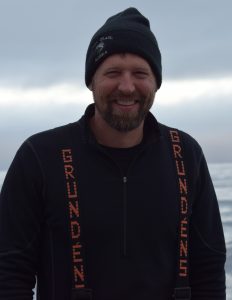 Matt is the Science Director for the North Pacific Research Board, a collaborating partner in the expedition. He is responsible for the development of the science program and research priorities, coordination of partnerships, and implementation of ecosystem research in the Bering Sea, Gulf of Alaska and Arctic. Matt is a marine ecologist with experience in groundfish, forage fish, squid, and salmon. Prior to working with NPRB, Matt worked with the NOAA Alaska Fisheries Science Center, developing models on species distribution and survey design. He has participated in scientific surveys in the Bering Sea, Chukchi Sea, and California Current. Prior to NOAA, Matt focused on population dynamics and physiology in salmon, as a researcher with and the University of Washington Alaska Salmon Program and Hatchery Program. He also worked as a commercial fisherman for salmon in Bristol Bay, Alaska. Matt serves on the North Pacific Steering Committee for the NPAFC IYS. His formal training includes a Masters at the Columbia University School of International Affairs and a PhD in Fisheries at the University of Washington.
Matt is the Science Director for the North Pacific Research Board, a collaborating partner in the expedition. He is responsible for the development of the science program and research priorities, coordination of partnerships, and implementation of ecosystem research in the Bering Sea, Gulf of Alaska and Arctic. Matt is a marine ecologist with experience in groundfish, forage fish, squid, and salmon. Prior to working with NPRB, Matt worked with the NOAA Alaska Fisheries Science Center, developing models on species distribution and survey design. He has participated in scientific surveys in the Bering Sea, Chukchi Sea, and California Current. Prior to NOAA, Matt focused on population dynamics and physiology in salmon, as a researcher with and the University of Washington Alaska Salmon Program and Hatchery Program. He also worked as a commercial fisherman for salmon in Bristol Bay, Alaska. Matt serves on the North Pacific Steering Committee for the NPAFC IYS. His formal training includes a Masters at the Columbia University School of International Affairs and a PhD in Fisheries at the University of Washington.
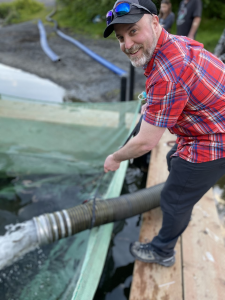 Tommy Sheridan is a fisheries consultant and educator based out of Cordova, Alaska. He has lived, worked, studied, and taught in and from Alaska for the past two decades, with a focus on commercial finfish (salmon and herring) fishery management and salmon hatchery operations. Tommy was appointed as a United States Representative to the North Pacific Anadromous Fish Commission on February 3, 2020 and continues to serve NPAFC as Alaska’s Commissioner.
Tommy Sheridan is a fisheries consultant and educator based out of Cordova, Alaska. He has lived, worked, studied, and taught in and from Alaska for the past two decades, with a focus on commercial finfish (salmon and herring) fishery management and salmon hatchery operations. Tommy was appointed as a United States Representative to the North Pacific Anadromous Fish Commission on February 3, 2020 and continues to serve NPAFC as Alaska’s Commissioner.
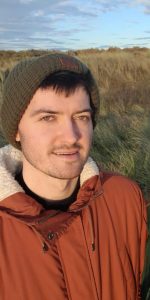 Elliott Price is a marine ecologist interested in pelagic food webs and consumer-resource interactions at lower trophic levels. In February 2022 he will begin his role as a postdoctoral researcher at the University of British Columbia to investigate the structure of zooplankton communities in the North Pacific. He obtained his PhD from the University of Liverpool, UK, where he studied the impacts of climate change on plankton communities in the Arctic. He achieved this using a combination of stable isotope analysis and DNA analysis to resolve the diets of key zooplankton species, and using multivariate statistics to resolve changes to the zooplankton and phytoplankton community composition in time and space. Prior to his PhD, he obtained an MSc in Aquatic Ecology at the Queen Mary University of London, UK where he investigated the influence of urbanization on stream food webs, and obtained a BSc in Conservation Biology from the University of Plymouth, UK.
Elliott Price is a marine ecologist interested in pelagic food webs and consumer-resource interactions at lower trophic levels. In February 2022 he will begin his role as a postdoctoral researcher at the University of British Columbia to investigate the structure of zooplankton communities in the North Pacific. He obtained his PhD from the University of Liverpool, UK, where he studied the impacts of climate change on plankton communities in the Arctic. He achieved this using a combination of stable isotope analysis and DNA analysis to resolve the diets of key zooplankton species, and using multivariate statistics to resolve changes to the zooplankton and phytoplankton community composition in time and space. Prior to his PhD, he obtained an MSc in Aquatic Ecology at the Queen Mary University of London, UK where he investigated the influence of urbanization on stream food webs, and obtained a BSc in Conservation Biology from the University of Plymouth, UK.
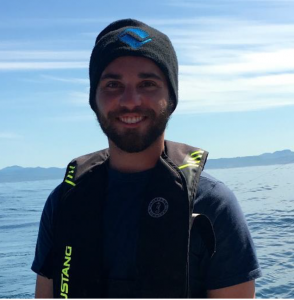 Jacob is a PhD candidate at the University of British Columbia in the Pelagic Ecosystems Lab under Dr. Brian Hunt. Jacob is a marine scientist with an interest in trophic ecology, biochemical tracers, and the impacts of climate change on marine food webs. Jacob’s PhD research investigates stock-specific Chinook salmon marine trophic ecology off the BC Coast utilizing bulk/compound specific stable isotope analysis. Jacob aims to investigate both this and Chinook habitat-use with the aim to connect these analyses with regional food web dynamics and climate change. Jacob is also interested in using these tools to examine the quality of Chinook salmon as prey for threatened resident killer whale populations.
Jacob is a PhD candidate at the University of British Columbia in the Pelagic Ecosystems Lab under Dr. Brian Hunt. Jacob is a marine scientist with an interest in trophic ecology, biochemical tracers, and the impacts of climate change on marine food webs. Jacob’s PhD research investigates stock-specific Chinook salmon marine trophic ecology off the BC Coast utilizing bulk/compound specific stable isotope analysis. Jacob aims to investigate both this and Chinook habitat-use with the aim to connect these analyses with regional food web dynamics and climate change. Jacob is also interested in using these tools to examine the quality of Chinook salmon as prey for threatened resident killer whale populations.
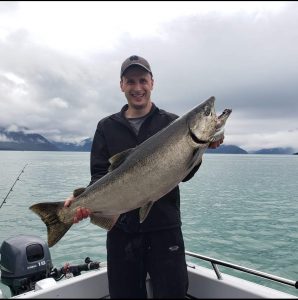 Andrew grew up in Juneau Alaska and spent most of my time as a kid fishing. He worked as a commercial deckhand drift netting during the summer and spent his days off sport fishing. In 2014 Andrew graduated from the University of Alaska Fairbanks with a BS in Fisheries.
Andrew grew up in Juneau Alaska and spent most of my time as a kid fishing. He worked as a commercial deckhand drift netting during the summer and spent his days off sport fishing. In 2014 Andrew graduated from the University of Alaska Fairbanks with a BS in Fisheries.
Andrew began working for NOAA in the summer of 2015 as a contractor on the Gulf of Alaska Longline survey. He continued working as a contractor with the Ecosystem Monitoring and Assessment (EMA) division of AFSC. In 2019, he was hired on as a federal term employee. His time is split between 2 programs. For the EMA program, he manages gear inventories, survey data, and participate in their Ecosystem surveys. The second program he works for is the Marine Ecology and Srock Assessment program at AFSC. For MESA, he helps manage and process their long line survey data as well as participate in their gulf of Alaska Longline survey.
F/V Northwest Explorer Survey Details
Departure from Dutch Harbor AK – April 2, 2022
Return to port in Dutch Harbor AK – April 21, 2022
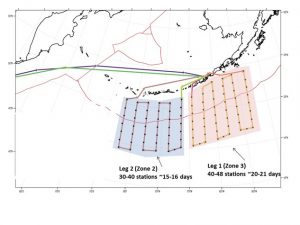 The survey area consists of 92 sampling stations. These stations arranged along three N-S transects (at 177°E, 180°, 178°W, 176°W, 174°W, 171°W, 169°W, 167°W, 165°W, 163°W, 161°W, and 158°W). Stations are spaced approximately 1° latitude (0.5° on the continental shelf) apart from 47°N to their southern end to 54°N at their northern end for the easternmost transect and from 44°N to 51°N on the westernmost transect. All stations on the continental shelf are outside the Steller sea lion critical habitat.
The survey area consists of 92 sampling stations. These stations arranged along three N-S transects (at 177°E, 180°, 178°W, 176°W, 174°W, 171°W, 169°W, 167°W, 165°W, 163°W, 161°W, and 158°W). Stations are spaced approximately 1° latitude (0.5° on the continental shelf) apart from 47°N to their southern end to 54°N at their northern end for the easternmost transect and from 44°N to 51°N on the westernmost transect. All stations on the continental shelf are outside the Steller sea lion critical habitat.
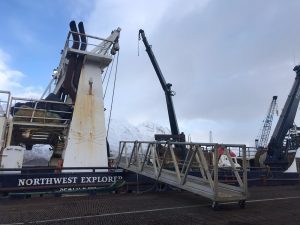
Name: F/V NORTHWEST EXPLORER
Gross Tonnage: 816
Length (m): 44.01
Maximum Speed: 14.1 knots
Year Launched: 1979
Home Port: Seattle WA
Flag: United States
Scientific Equipment on Board
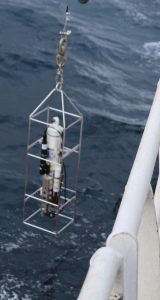
A hydrographic winch for will deploy a CTD (conductivity, temperature, and depth), and rosette of Niskin bottles to collect water samples. The CTD uses an electromechanical cable so the data from the CTD is provided in real time. This means that you can watch the water column properties (temperature, salinity, oxygen, flourescence, and turbidity as the CTD descends.
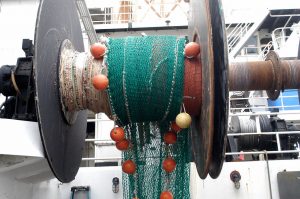 Scientists will be fishing with a Cantrawl 400 midwater rope trawl towed at the surface. The net has hexagonal mesh in the wings and body, is 198 meters long, with a headrope length of 120 m, and 12 mm liner in the codend. Steel alloy 5 m2 doors are used to hold the net open. The net is towed at 4.5-5 knots.
Scientists will be fishing with a Cantrawl 400 midwater rope trawl towed at the surface. The net has hexagonal mesh in the wings and body, is 198 meters long, with a headrope length of 120 m, and 12 mm liner in the codend. Steel alloy 5 m2 doors are used to hold the net open. The net is towed at 4.5-5 knots.



